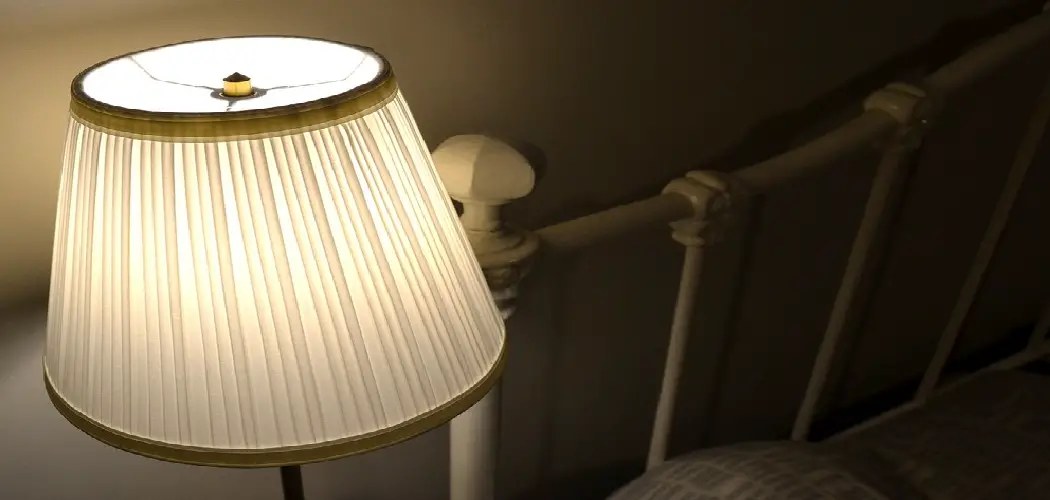Removing a lampshade from a lamp is a straightforward process that can serve multiple purposes, from enhancing the lamp’s appearance to improving its functionality. Whether you need to clean the lampshade, replace it with a new design, or access the bulb for replacement, understanding the proper method is essential.
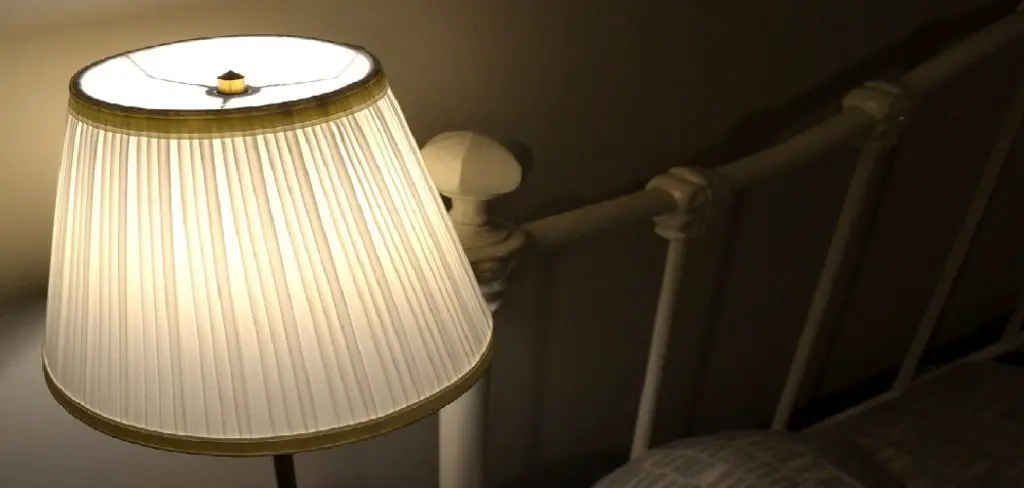
Different lampshade types, such as clip-on, harp and finial, or slip-on shades, may require slightly varied approaches for removal. This article aims to provide a clear, step-by-step guide to help you safely and efficiently understand how to remove a lampshade from a lamp.
By following these instructions, you can ensure both the longevity of your lamp and its continued visual appeal while avoiding any potential damage during the process.
Understanding Different Lamp and Lampshade Types
When it comes to removing a lampshade, it’s essential to start by identifying the type of lamp and lampshade you’re working with, as each can have unique characteristics and attachment methods.
Types of Lamps
- Table Lamps: These are commonly used for desks, side tables, and other compact spaces. Table lamps include a range of attachment methods depending on their size and design.
- Floor Lamps: Taller and often designed to illuminate larger areas, floor lamps may use more robust attachment systems like harps and finials or slip-on shades.
- Pendant Lamps: Hanging from the ceiling, pendant lamps often feature unique fastening mechanisms that may differ significantly from traditional floor or table lamps.
Types of Lampshades
- Clip-On Lampshades: These shades are lightweight and attach directly to the lightbulb using a clip. They’re often used with small table lamps or chandeliers.
- Harps and Finials: A harp is a metal frame supporting the lampshade, typically used on larger or decorative lamps. A finial at the top secures the shade in place, requiring unscrewing for removal.
- Slip-On Shades: These straightforward designs slide over the bulb socket without additional fasteners and are typically found on simple or modern lamp styles.
Understanding these variations helps ensure a smooth and damage-free process when removing the lampshade, preserving both the lamp’s function and aesthetic integrity.
Materials and Tools Needed
Tools for the Job
To successfully remove a lampshade without causing any damage, you’ll need the following tools and materials:
- A soft cloth: Helps protect delicate surfaces and can be used for cleaning any dust or residue from the shade or lamp.
- A small step stool: Essential for reaching taller lamps safely without overextending yourself.
- A screwdriver: Useful for lamps that feature screws or metal supports securing the shade.
Safety Considerations
Prioritize safety while handling your lamp by following these key precautions:
- Turn off and unplug the lamp before attempting to remove the shade. This eliminates the risk of electrical shock or accidental activation of the lamp.
- Handle lampshades with care, especially those made from fragile materials like glass, fabric, or paper, which can easily tear, crack, or become misshapen.
- Work in a well-lit and uncluttered space to ensure maximum visibility and reduce the potential for accidents.
Being prepared with the right tools and a focus on safety will make removing the lampshade efficient and hassle-free.
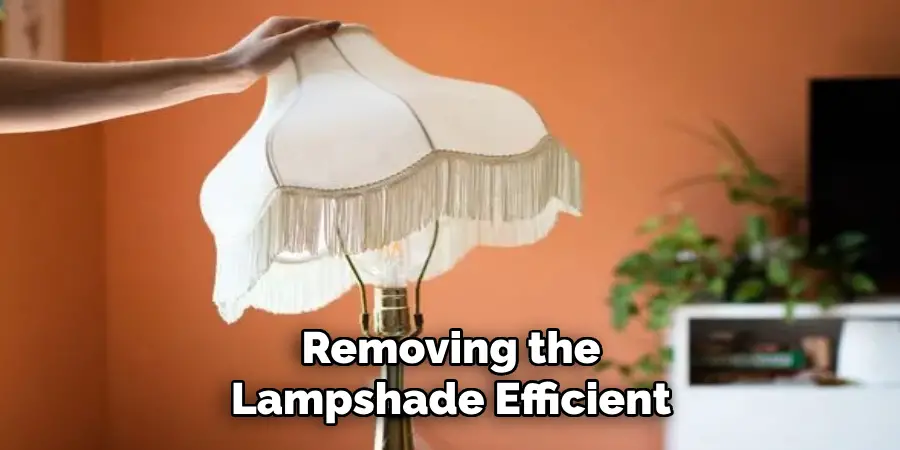
How to Remove a Lampshade From a Lamp Removing Clip-On Lampshades
Removing a clip-on lampshade is a straightforward process that requires a bit of care and attention to ensure safety and prevent damage. Follow these steps for an efficient and successful removal.
Step 1: Turn Off the Lamp
Before handling the lampshade, ensure the lamp is turned off and unplugged. This precaution eliminates any risk of electrical shock and ensures a safe working environment.
Step 2: Grasp the Lampshade
For clip-on lampshades, securely hold them with one hand, ensuring a stable grip on the frame. Support the shade base to avoid bending or damaging it during removal.
Step 3: Detach the Lampshade from the Bulb
Carefully pull the lampshade from the bulb socket. The clip mechanism within the shade should release smoothly without requiring excessive force. Avoid twisting or yanking, as this could damage either the clip or the bulb.
Step 4: Clean or Replace
Once the lampshade is removed, take the opportunity to clean it using an appropriate method for its material, such as dusting or wiping with a damp cloth. If the shade is damaged or outdated, replace it with a new one of the same size and type.
Step 5: Reattach (if applicable)
To reattach the lampshade, gently slide it back onto the bulb socket, ensuring the clip mechanism securely holds the bulb. Confirm it is properly in place before using the lamp again.
By following these steps, you can efficiently remove and handle clip-on lampshades without hassle or worry.

How to Remove a Lampshade From a Lamp Removing Slip-On Lampshades
Step 1: Turn Off the Lamp
Before starting, ensure safety by turning off the lamp and unplugging it. This step prevents any potential electric shocks or accidental mishaps during the process.
Step 2: Grasp the Lampshade
Carefully position your hands on the lampshade, either near the top or at the base, depending on its design. Maintain a gentle but firm grip to avoid bending or damaging the shade during removal.
Step 3: Slide the Lampshade Off
Gently lift and slide the lampshade straight upward and off the lamp socket. Be sure to apply slow and steady pressure to avoid forcing it. Slip-on lampshades can sometimes fit snugly, so approach the process patiently to prevent any damage.
Step 4: Clean the Lampshade
Once you have removed the lampshade, cleaning it before replacing or storing it is a good idea. Use a soft cloth or duster to remove any dust and debris from the shade gently. You can also use a vacuum attachment for harder-to-reach areas. Be careful not to press too hard as this may damage delicate materials like silk or paper. If your lampshade is stained, you can use a mild cleaning solution or spot cleaner designed explicitly for lampshades.
Follow the instructions carefully and test a small area first before applying it to the whole shade. Once clean, allow the lampshade to dry fully before reattaching it to your lamp.
Troubleshooting Tips for Stubborn Lampshades
Lampshades Stuck on the Bulb
If your lampshade is stuck to the bulb, avoid applying excessive force, as this could damage the bulb, shade, or socket. Instead, gently twist the shade back and forth to loosen its grip. This motion helps dislodge any resistance caused by the bulb or socket connection. If the shade remains firmly in place, consider applying a small amount of lubricant, like WD-40, around the base of the bulb socket. Allow the lubricant to settle for a few moments before removing the shade again. Always work carefully to avoid spilling the lubricant on the shade or nearby surfaces.
When the Harp or Finial is Stuck
A stuck finial or harp can also make removing a lampshade challenging. Begin by inspecting the area for dirt, dust, or debris that may have caused a tight seal. Use a soft cloth or brush to clean the components. If the finial or harp remains stuck, gently tap it with a small tool to help loosen it. Carefully use a pair of pliers for particularly stubborn pieces to grip and rotate the component. Wrap the pliers with a soft cloth to avoid scratching or damaging the lamp. Always handle these tasks with caution to ensure the integrity of the lamp and its parts.
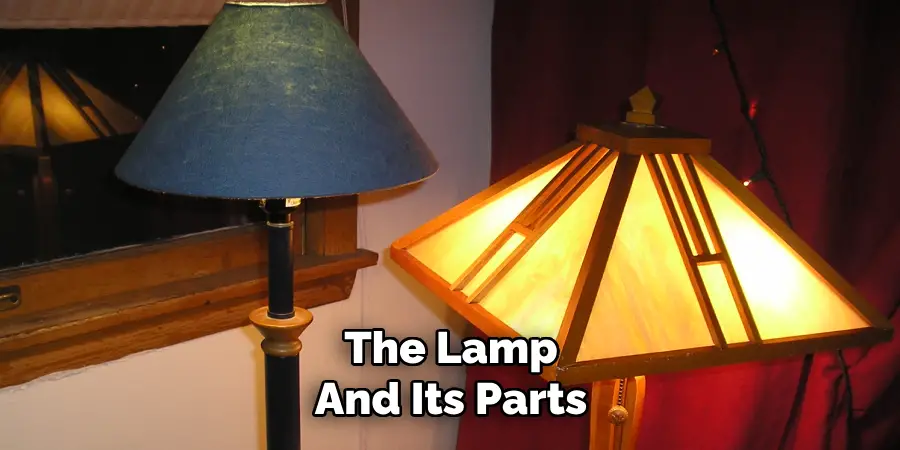
Cleaning and Replacing the Lampshade
Cleaning the Lampshade
Dusting: Use a soft cloth or duster to remove dirt and dust from the lampshade gently. Regular dusting helps maintain its appearance and prevents build-up over time.
Washing: For fabric lampshades, spot clean with a mild soap and water solution. Be sure to avoid soaking the fabric and ensure it dries completely before reassembling. Always refer to the manufacturer’s cleaning instructions for specific fabric care.
Special Cleaning: For more delicate materials like silk or glass, use a gentle cleaning solution applied with a microfiber cloth. Take extra care to avoid scratching or damaging these surfaces.
Replacing the Lampshade
If the lampshade becomes damaged or outdated, consider replacing it with a new one. Carefully remove the old lampshade by loosening the finial and harp, if applicable. Choose a replacement lampshade that complements the lamp and provides an appropriate fit. Ensure the new lampshade is properly secured and aligns with the design and functionality of the lamp. A well-fitted lampshade enhances the lamp’s aesthetic appeal and ensures optimal light diffusion and safety.
When choosing a new lampshade, consider the size, shape, and style of the lamp. A larger lamp base may require a bigger shade to balance out the proportions. The shape of the shade should complement the shape of the base; for example, a round or square base would look best with a similarly shaped shade.
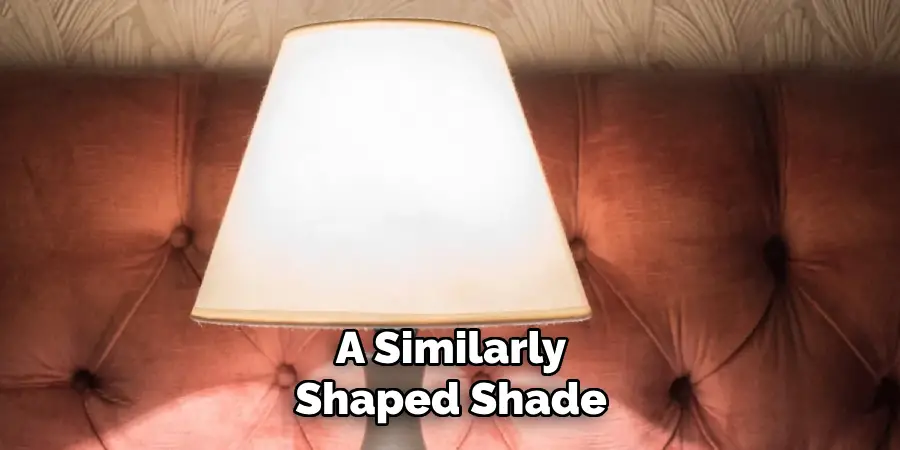
Conclusion
Different lamp types require specific methods for removing lampshades, such as clip-on, harp and finial, or slip-on designs. Regardless of the type, it is crucial to prioritize safety by ensuring the lamp is turned off and unplugged before handling it. Understanding “how to remove a lampshade from a lamp” can simplify the process and help preserve the integrity of your lamp and shade. Finally, remember to regularly clean your lampshades to maintain their appearance and functionality, ensuring they continue to enhance your space both aesthetically and practically.

